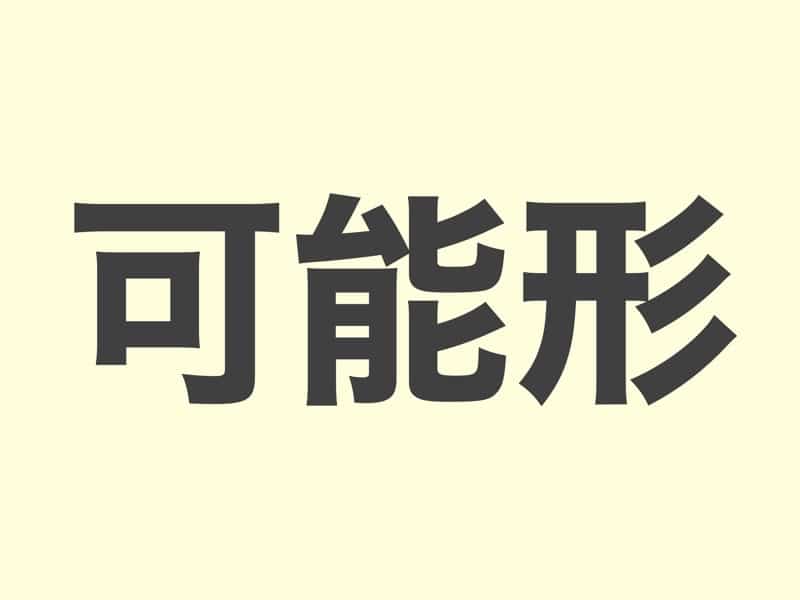The potential form in Japanese is essential for expressing ability, allowing you to say what you or others are capable of doing. In this beginner’s guide, we’ll dive into how to conjugate verbs into their potential form across the three main verb groups. By mastering this form, you’ll be able to add a new layer of expression to your Japanese language skills, making your conversations more fluid and natural. Let’s get started on understanding the potential form and how it can enhance your ability to communicate!
JLPT Textbook Recommendations
Group 1 (U-Verbs)
Rule: Replace the final “i” sound in the verb stem with “e” and add “masu”.
| Verb(masu form) | Potential Form |
| うたいます (utaimasu) | うたえます (utaemasu) |
| ひきます (hikimasu) | ひけます (hikemasu) |
| およぎます (oyogimasu) | およげます (oyogemasu) |
| はなします (hanashimasu) | はなせます (hanasemasu) |
| もちます (mochimasu) | もてます (motemasu) |
| あそびます (asobimasu) | あそべます (asobemasu) |
| よみます (yomimasu) | のめます (nomemasu) |
| はしります (hashirimasu) | はしれます (hashiremasu) |
Group 2 (Ru-Verbs)
Rule: Simply remove ます (masu) and add られます (raremasu).
| Verb(masu form) | Potential Form |
| たべます (tabemasu) | たべられます (taberaremasu) |
| しらべます (shirabemasu) | しらべられます (shiraberaremasu) |
| おぼえます (oboemasu) | おぼえられます (oboeraremasu) |
Group 3 (Irregular Verbs)
Rule: These verbs are irregular and must be memorized.
| Verb(masu form) | Potential Form |
| します (shimasu) | できます (dekimasu) |
| きます (kimasu) | こられます (koraremasu) |
例文 (Examples)
- 日本語が話せます。
- ひらがなが読めます。
- 漢字が書けません。
- 運転できません。
ひらなが (Hiragana)
- にほんごがはなせます。
- ひらがながよめます。
- かんじがかけません。
- うんてんできません。
英語翻訳 (English Translation)
- I can speak Japanese.
- I can read Hiragana.
- I can’t write Kanji.
- I can’t drive.





コメント